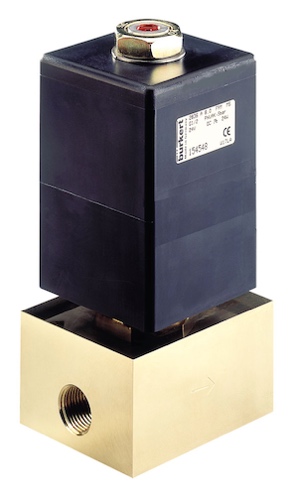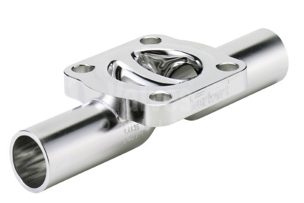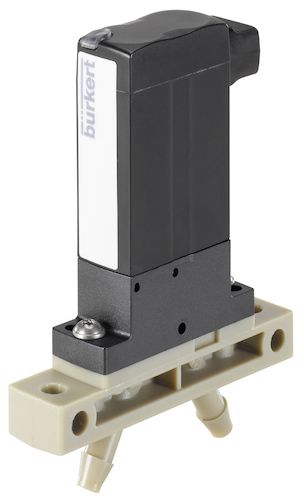
What is a solenoid valve used for?
A solenoid valve is used to control the flow of clean liquids and gases. They’re widely used in automation and control applications to actuate industrial valves, tools and cylinders. To find out more about the use of solenoid valves, how they work and potential problems they can create, continue reading BM Engineering’s helpful guide.
How does a solenoid valve work?
There are two main components inside a solenoid valve: a valve body and a solenoid. A solenoid has a coil, that is electromagnetically inductive, around an iron core at the centre which is called a plunger. When a current passes through the solenoid, the coil becomes energised and creates a magnetic field which creates a magnetic attraction with the plunger. This moves the plunger, overcoming the spring force.
If the valve is normally closed, the plunger will lift which opens the seal, allowing the flow of the liquid or gas through the valve. If the valve is normally open, the plunger moves downwards so the seal stops the flow.
What is a solenoid valve used for?
Solenoid valves are used to open, close and mix media in any given application. You can find the use of solenoid valves in the following applications:
- Refrigeration systems
- Irrigation systems
- Dishwashers
- Air conditioners
- Medical and dental equipment
- Water tanks
- Industrial cleaning equipment
Refrigeration systems
You’ll find the use of solenoid valves in refrigeration systems. They’re used to reverse the flow of refrigerants which helps in cooling during summer months, and heating during winter.
Irrigation systems
Water irrigation systems, like garden sprinklers, make use of solenoid valves too. The solenoid valve controls the flow of the water by applying a voltage over the coil. This opens the valve allowing the liquid to flow through.
Dishwashers
In a similar function, dishwashers also use solenoid valves. The valve controls how much water is flowing through the system to complete the cleaning of the dishwasher’s contents. Washing machines also make use of solenoid valves in the same way.
Air conditioners
Solenoid valves are also used to control the flow of compressed air in a system. This makes them useful for air conditioning systems, as the valve controls how much air is flowing through.
Medical and dental equipment
Medical and dental equipment also use solenoid valves to control the direction, pressure and flow of fluid. Medical applications demand high standards in terms of reliability, cleanliness and lifespan. The use of solenoid valves are found in dialysis machines, dosing equipment and blood pressure monitoring devices.
Water tanks
Just like irrigation systems, dishwashers and washing machines, water tanks require the use of solenoid valves to control the direction, flow and pressure of water.
Industrial cleaning equipment
Solenoid valves are found in industrial cleaning equipment like pressure washers and floor cleaners. They’re used because the valves can provide a solution to high and low-pressure applications.
For highly corrosive fluids, media-separated solenoid valves are used.
Potential problems and solutions
There are two possible problems that applications can find with solenoid valves: coil failure and valve failure.
Coil failure
Solenoid coil failure can be caused by a variety of factors, including applying an incorrect voltage to the coil. This can cause the coil to burn out. Burnt out coils cannot be repaired and must be replaced.
Contact with water or other liquids can also lead to coil failure. The coil must have an IP65 rating to protect against water. However, if the solenoid valve or application is situated in damp conditions, suitable protection against moisture should be used.
Sediment and other particles can also cause the failure of the coil if entering the valve. If any particles enter the valve, it can restrict the movement of a component called an armature. The coil will continue to attempt to move it but, due to the restriction from the particles, it will eventually overheat and fail. There should be an upstream filter fitted in order to prevent any unwanted particles from entering the application.
Valve failure
A solenoid valve can fail if the pressure rating is exceeded. This can cause damage to valve components. You can find indications of over-pressure with tears in the diaphragm, and in some cases, excessive pressure can cause damage to the valve body.
Similar to the reason behind coil failure, unwanted particles entering the system can also cause valve failure. Contamination of seals or diaphragms can result in the valve not being able to close properly. If there is a valve leaking, it’s an indication of unwanted foreign bodies preventing the valve from sealing correctly. Contamination can also block orifices which leads to valve failure.
Solenoid valves at BM Engineering
BM Engineering offers a variety of solenoid valves from industry-leading manufacturer, Bürkert.
Bürkert solenoid valves from BM Engineering are applicable for a wide variety of functions, such as general on/off control and process control systems, to name but a few. As with our other valve types, all of the solenoid-operated valves we stock are designed to provide industrial applications based in Scotland and the wider UK with a high-performance flow control solution.
Here at BM Engineering Supplies, we primarily stock two types of solenoid valves: pneumatic and general-purpose solenoid valves.
If you’d like to know more about the solenoid valves we stock at BM Engineering, don’t hesitate to contact us today on 0141 762 0657 or email us at sales@bmengineering.co.uk.



